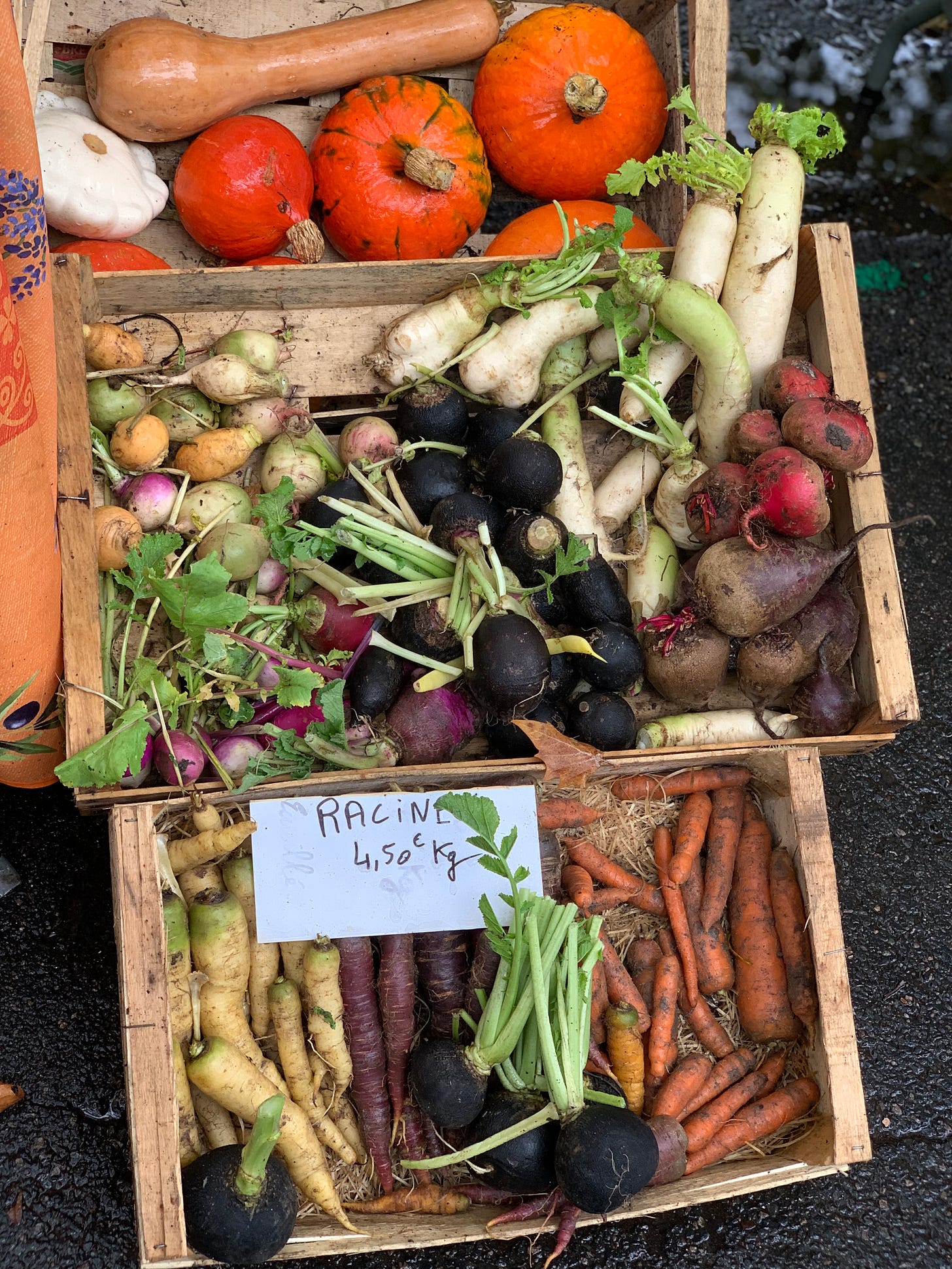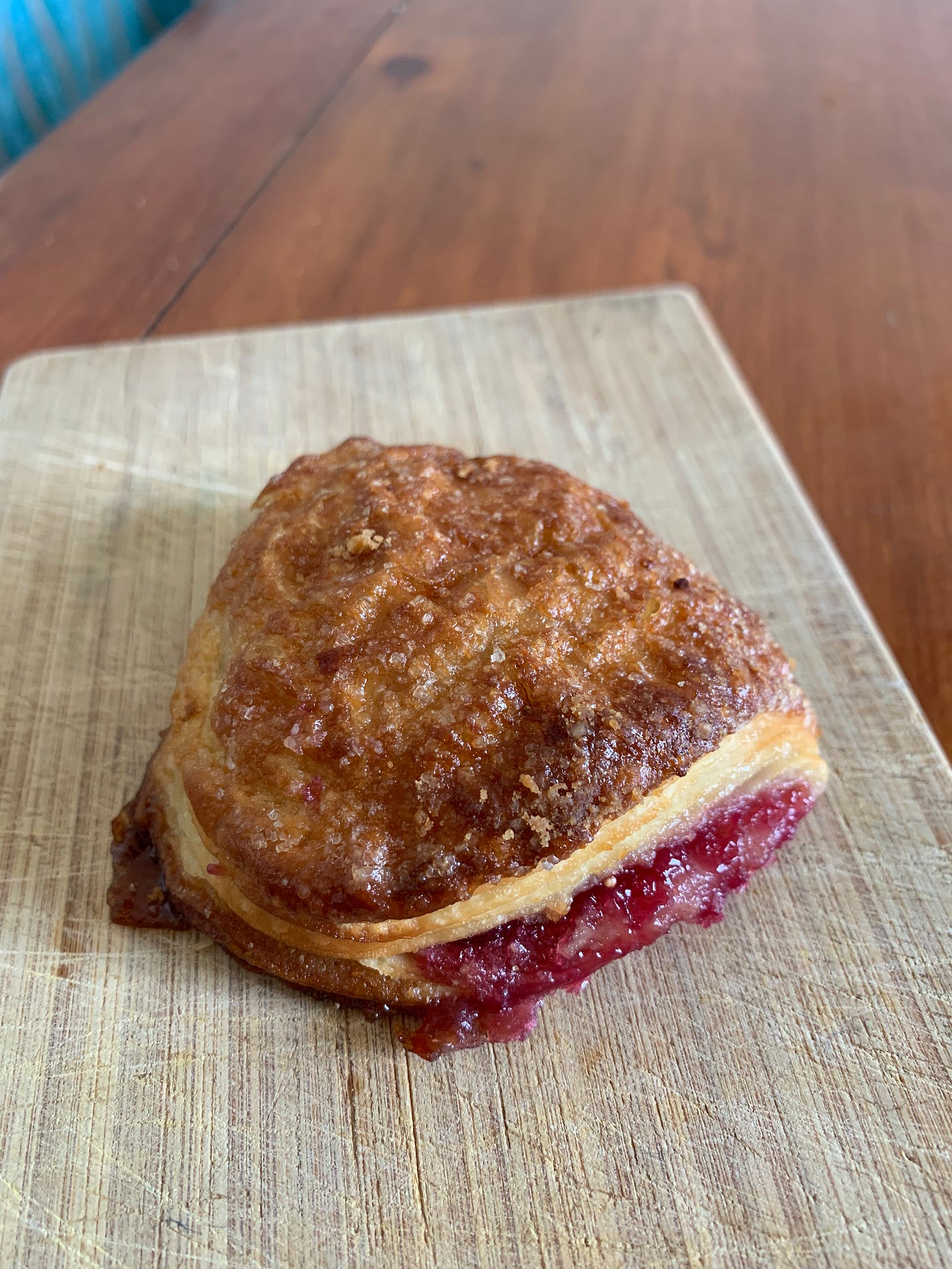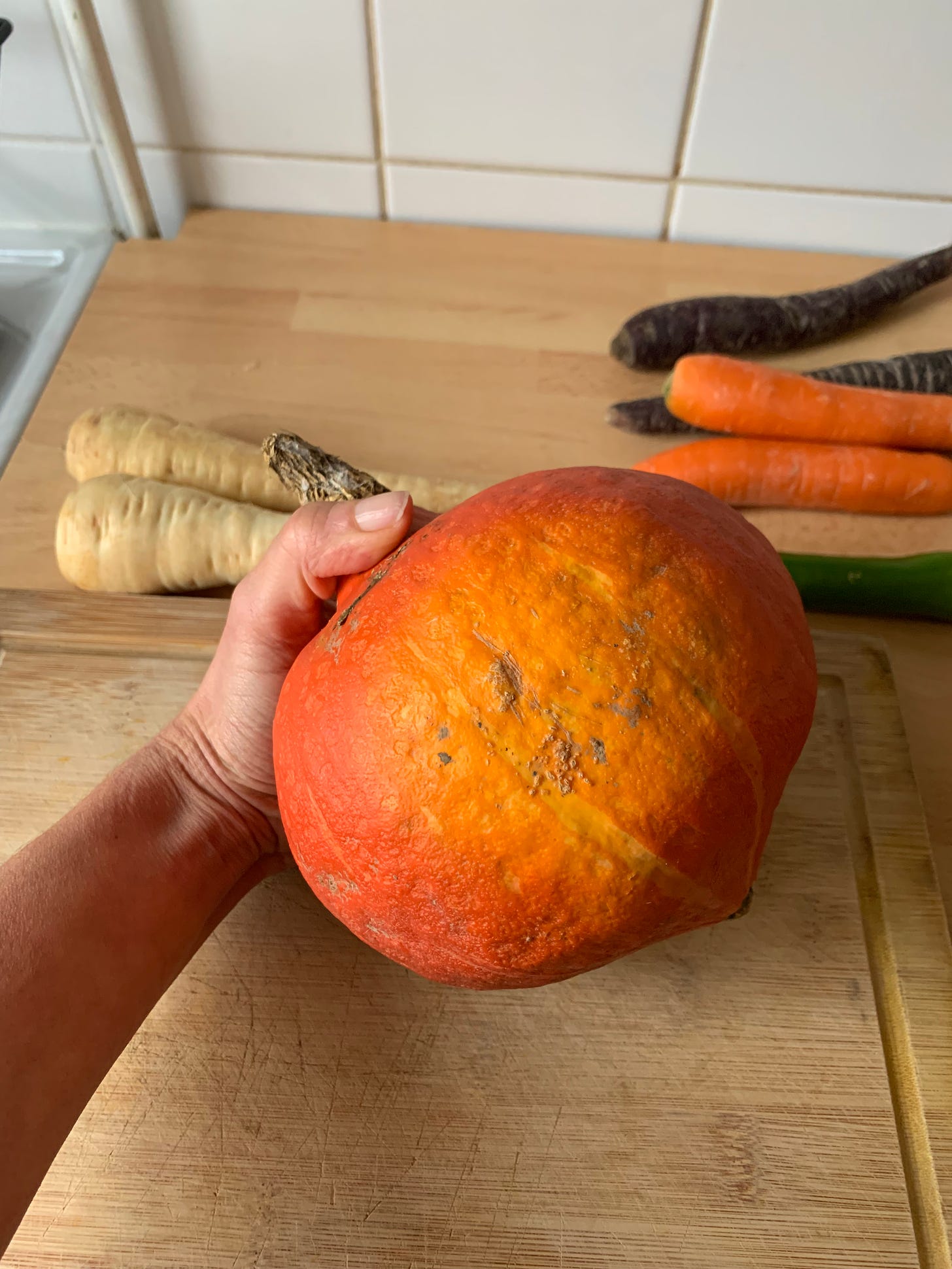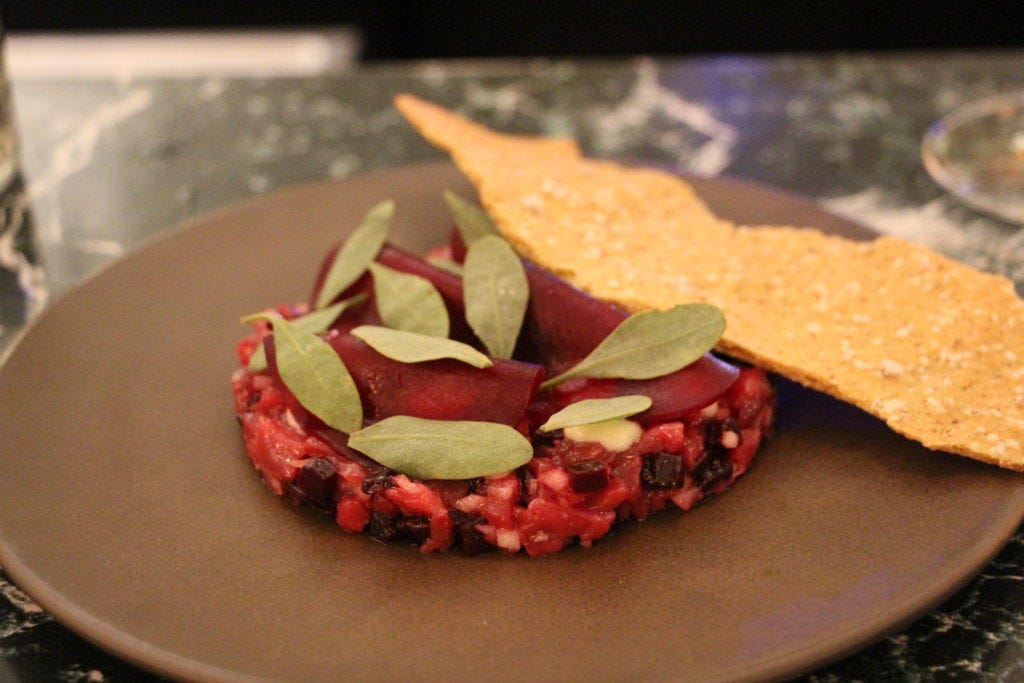I was never all that aware of the seasonality of produce before moving to France. Sure, I knew tomatoes were a summer thing, and I was aware that oranges were more prevalent at Christmastime, but mainly because my family grew up studding them with cloves to make pomander balls. It’s easy, when supermarkets stock forced produce from South America and California, to forget that strawberries shouldn't be available for Valentine’s Day, or that in spite of the preponderance of kale salads, the crucifer isn't really at its best in summer. But in France, especially when I moved here 17 years ago, you had far less choice. Asparagus are only available from March to May; the season for mirabelles has been and gone in a blink.
Regardless, even in my early days in France, I didn't stick wholly to seasonal produce. I always had broccoli in and frequently bought net bags of clementines even when they weren't at their best – often meaning that I’d be facing off with one rotten one that would quickly infest the entire bag. I bought imported sweet potatoes to make myself feel at home, and I ate pineapple from January to December.
It took a particular market vendor to make me change my tune.
It was in 2011 that I started visiting my local weekly market, staffed mainly, as most of Paris’ outdoor markets are, with resellers rather than farmers. There was, however, at least one of the latter, a jovial man who, in mid-September, was still selling the last of the season’s strawberries and tomatoes while also bringing to market the first of the squash.
So enticed was I to see this shoulder season produce shoulder-to-shoulder that I bought a bit of both, making a pumpkin chausson with caramelized onion and goat cheese and serving it with a fresh tomato salad with basil on the side. All at once, my vague ideas of seasonality came into focus, and guided, at least at first, by what was on sale at my local Monoprix, I became more and more aware of the beautiful way that my cravings could and did follow the bounty of a given month or even a given week.
Cut to 13 years later, and I’m almost militant about seasonality. I refuse to buy broccoli in summertime, and I eschew courgettes the second the first frost comes. It’s helped by the fact that I do much of my shopping from local produce vendors or from La Ruche Qui Dit Oui, not to mention the fact that I often volunteer at the urban farm in the 18th arrondissement's La Recyclerie, where I get my hands dirty – literally – harvesting grapes or watching the first squashes emerge. Add to that the wealth of chefs I interview on a near-daily basis, and I’m surrounded by people who believe in seasonality.
This holds just as true for the folks I visit during my food tours. One of my favorite places to bring people on my Canal Saint-Martin tour is an artisan chocolatier, more than half of whose collection changes when the seasons do. We just bid goodbye to a basil and balsamic chocolate and welcomed a host of offerings with fillings ranging from maple syrup to chestnut to butter-baked apples.
On that same tour, I visit a bakery I absolutely love whose chausson varies depending on what’s being harvested. Mirabelles gave way to this bright pink fig filling, which has only recently taken its last bow in favor of the apple version.
I will admit, however, that my unironic love of all things fruit-and-veg (which may even rival my love of cheese…) sometimes means I take too much advantage of the season’s bounty. This spring, I ate strawberries until I grew sick of them; I bought watermelon quarters more than weekly, slicing them and chilling them so that icy-cold slices were within reach at all times, but by the time September arrived, I couldn't bear the thought of trimming one last scrap of white rind from the pink flesh.
Right now, the apples of my eye are apples, especially floral Chanteclercs and tart Boskoops. A market vendor in Burgundy this past weekend took care to “warn” me that the former are “soft;” my produce vendor in Saint-Quentin market made sure to inform me that the latter are “very tart” and “best for baking.” I always smile and nod when given this advice, though I know what I like, and I like both eaten out of hand, core and all, a habit I stole from an ex long ago.
My other produce of predilection currently is potimarron, also known as red kuri squash or Hokkaido squash. This variety is omnipresent in fall in Paris, easily supplanting other varieties of pumpkin and even butternut squash in popularity. I love it for its creamy texture and sweet flavor reminiscent of the chestnuts or marrons featured in its portemanteau name.
Given its long season, I’d wager I buy more potimarron, by weight, than any other vegetable. I douse them abundantly in chili flakes and roast them – either on their own or with carrots and parsnips – to enjoy on my nights in on my own or to enjoy cold in my lunchtime salads. For years, now, my girlfriend has joked that I should keep track of how many I buy each year… so I’m finally doing it.
So far, the answer is five – six, as of this morning. Check in with me in March to see if I’ve turned orange.
Cheese of the Week
If you're a fan of Dutch cheeses like Edam or Gouda, mimolette is the one for you. Purported to be Charles de Gaulle’s favorite, this sphere of cheese with an almost lunar surface was ostensibly invented at the time of the Franco-Dutch War at the behest of finance minister Jean-Baptiste Colbert, who asked Flemish farmers to find a way to make Edam locally and thus keep the French from importing the foreign cheese. They used anatto to disguise the copycat, and voilà: mimolette was born. It’s pretty much the perfect cheese for Halloween, though it’s delightful any day of the year.
To discover more of my favorite cheeses, be sure to follow me on Instagram @emily_in_france, subscribe to my YouTube channel, and tune into the Terroir Podcast, where Caroline Conner and I delve into France's cheese, wine, and more one region at a time.
What I’m Eating
Disclosure: I was a guest of the property for this meal.
ACCENTS Table Bourse is a total gem of a fine dining restaurant, where a playful interchange of sweet and savory is omnipresent but never cloying. Seeing as the chefs often double as waitstaff, the overall experience is less stilted and fussy than it could be in a place of this caliber. On the contrary, I felt as though I was being invited into a homey wonderland driven jointly by creativity and warmth. More on the blog.
Where I’m Going
1. To check out a (free!) expo on the Liberation of Paris at Agence France-Presse before it ends.
2. To the Comédie Française (for the very first time!) to see Le Malade Imaginaire.
3. To Joséphine Vannier, a chocolate shop known for its exquisite chocolate sculptures, while I research a new story for Bonjour Paris.
What I'm Writing
1. Wander around Paris on a Monday without dinner plans, and you may be stuck eating a vending machine baguette. Parisian chefs tend to take their well-deserved day off on Mondays, which makes finding anything even remotely delicious tougher than getting a clear view of the Mona Lisa. We’ve got you covered. This guide has restaurants with options ranging from plant-driven small plates to classic French bistros to some of the best pizza north of Naples—and they’re all open on Mondays. For the Infatuation.
2. It's no surprise that in France, the saucier is the most respected role in any kitchen brigade, or that the protein in Mexico's national dish is secondary to its sauce. A good sauce can make a dish; a bad one can render the recipe inedible. But since sauces can require loads of ingredients and time to prepare, these days, supermarket aisles teem with convenient versions: prepared sauces ready to add flavor to dishes in a snap. Some of these shortcuts are actually worthwhile, and some pale in comparison to the real thing. Here are the ones chefs say are worth actually making from scratch – and the ones you can totally buy storebought. For the Takeout.
3. From the archives: It seems no food makes people go quite as gaga as cheese, and with over a thousand different products that are at their core, merely spoiled milk, the category of cheese is rife for exploration. For Mashed.
What I'm Saying
When Hemingway called Paris a fête, he wasn't saying it was a party. Instead, he was evoking something far deeper – an essential element of the city that has long captivated many drawn to the French capital. To delve into what exactly that elusive thing is, this week on Navigating the French, I’m joined by Samuél Lopez-Barrantes, an American writer, musician, and tour guide in Paris, to navigate fête.
FAQs
With the goal of bringing you the content you crave, I've solicited your help. What questions can I answer for you? Drop them into the newsletter chat, and I’ll answer as many as I can!
What I'm Reading
1. I saw the film adaptation of Practical Magic long before reading the book, and while this was actually the second time I read the novel, it was a pleasure to reread, as I’d forgotten many of the major differences. The magic in this version is a lot more muted, bringing the bonds of three generations of sisterhood into fuller focus.
2. This joyful exploration of the pure pleasure of reading Dickens, which, the writer says, stems in large part from Dickens own joy in writing. “"What I had forgotten was Dickens’s joy in writing, which he shares with the reader. You are rooting for him to take chances, to score, to go for it, to reach for the seemingly irrelevant detail, the louche metaphor. He exhibits so exuberant and generous a degree of writerly candor and companionability that the reader is always loyal to him: this man is happily working to entertain us.” In the New Yorker.
3. This truly poetic ode to pasta, pie, and potatoes. In Le Bon Home.
A bientôt !













